Chemicals in Toys? Baby Allergies? Toddler Allergies? Why BPA-free Toys Bottles & Containers
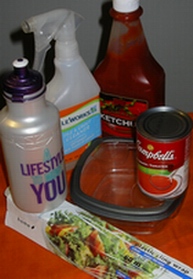
Here’s what you need to know about toxic chemicals called “plasticizers” and “endocrine disruptors!”
No, they may not cause baby allergies or toddler allergies, but can set the stage not necessarily childhood cancer, but future cancers even in the next generation.
What's the problem with BPA's?
Most sports and baby bottles made in the USA used to have BPA, or Bisphenol-A in them. This is a hormone-disruptor.
Sports and baby bottles become worn and scratched and begin to leach BPA into the liquids that's in them.

- World-wide these hazardous chemicals are used to soften, stabilize and make soft plastic products such as toys and bottles, as well as the lining of the can of soup you had for dinner!
These chemicals -- phthalates, BPA and dioxins called ‘plasticizers’ that are known to be endocrine disruptors, or HORMONE disruptors.
Even in VERY SMALL DOSES, these are being linked to weight gain, obesity, and a host of problems such as diabetes, heart disease and cancer.What are Hormone Disruptors?
Endocrine disruptors interfere with or “mimic” hormones, especially the female hormone estrogen and the male hormone testosterone.
Hormones are “messengers” produced by glands such as the ovaries, testes, as well as by the thyroid, adrenals and so forth, that regulate the body.
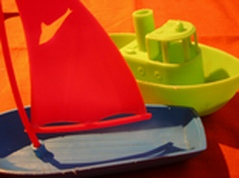
- Endocrine disruptors can, for instance, cause infertility in males and cancers in female experimental animals.
- Much of the research that has found harmful effects has been conducted using animals that were given doses similar to what people usually eat in their food.
Scientists are now finding that EXTREMELY SMALL AMOUNTS -- parts per billion -- can cause problems in humans as well, and that there are likely NO “SAFE” LEVELS.
Although chemicals USUALLY need to reach a “threshold” amount to have a significant effect, researchers in the 1990’s began to report that VERY SMALL QUANTITIES of endocrine disruptors were causing problems.
- Plastics have been difficult to "pin down" for asthma and allergies, with food allergies getting most of the attention for child health problems.
Plastics, however, have been shown to be detrimental to the immune system, so that they deserve attention.
- Large Effects From SMALL EXPOSURES:
Why there are NO Safe Levels?

Recently scientists have been shocked to find that it takes only tiny amounts of these disruptors to “mimic” estrogen and thereby cause big changes.
And they are building up in our environment!
Low-dose Toxicity:
Extremely low doses of phthalates given to mice – in the low concentrations we might get from our water bottles -- can cause problems with male reproduction.
Dr. Shanna Swan is the first to report these changes in humans – in baby boys. Shanna Swan, PhD, Environmental Health Perspectives (2005;113:1056–1061)
- Mc Gill University researchers who were monitoring the small fish, the minnows that are in the St Lawrence River, found that one third of the males are developing ovaries and are no longer able to reproduce. As a result, these small fish may die out, and then the big fish will have nothing to eat.
Scientists were also alarmed that many of these chemicals are showing up in the far away Arctic, and in freshly fallen snow and rain everywhere else. They are beginning to find these chemicals to be both PERSISTENT and ACCUMULATING.
- And instead of becoming less toxic as they bio-degrade in nature, these substances, scientists are discovering, are INCREASING in TOXICITY, and they don’t go away.
Pregnant Moms and Babies

The developing fetus is particularly sensitive to endocrine-disrupting chemicals.
Over many years and in many studies, phthalates have been shown to disrupt reproductive tract development in male mice.
But then Dr. Swan found a significant relationship even in humans between a mother's exposure to phthalates and problems with genital development in boys.
- Dr. Swan of the Center for Reproductive Epidemiology at the University of Rochester School of Medicine found an association between higher phthalate levels in pregnant women and changes in the genitals in their infant sons.
The developing fetus may be especially affected by endocrine disrupting chemicals, because it cannot fully protect itself. (detoxification enzymes are not completely functional, and the blood-brain barrier that is still being formed)
For chemicals that alter the hormone system, the timing of exposure is critical, says Richard Jirtle, a professor at Duke University Medical Center.
- His work suggests that endocrine disruptors such as bisphenol A, or BPA, may affect developing offspring in the earliest days of pregnancy.

In an experiment published in Proceedings of the National Academy of Sciences, Jirtle found that feeding BPA to female mice changed the color of their babies' coats. BPA caused more than cosmetic changes.
- In this breed, brown mice grow up with healthy weights, while those with yellow coats grow up to be obese, with a higher susceptibility to cancer and diabetes.
- In Jirtle's experiment, mothers fed BPA before, during and after pregnancy had twice as many yellow babies - which made up 21% of their litters - as mothers who weren't fed the chemicals.
In humans, endocrine disruptors are of most concern during critical windows of vulnerability, especially the first two trimesters of pregnancy.
What Products In YOUR Home Have BPA in Them?

Phthalates (pronounced THAL-ates) are human-made endocrine disrupters with anti-androgen activity, found in everyday products such as:
• vinyl flooring
• baby bottles
• detergents
• automotive plastics
• soap
• shampoo
• deodorants
• fragrances
• hair spray
• nail polish
• plastic bags
• food packaging
• garden hoses
• inflatable toys
• intravenous tubing
You and your Baby Are Not Protected
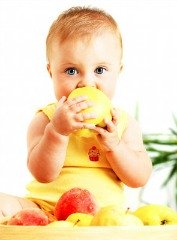
While "BPA-free" labels are labeling has become common, but...
"The use of these chemicals is totally unregulated internationally," says Kathleen Cooper of the Environmental Law Association, "so even if there is a voluntary agreement in domestic markets, the cheap stuff from developing countries or export processing zones makes it on to our shelves and into our homes."
- More than 100 peer-reviewed studies have found bisphenol-A, BPA to be toxic at low doses, some similar to those found in people, but regulatory agencies have not updated safety standards to reflect this.
What's the solution?
- Consumers need to make better choices and learn to use less plastic.
What to Watch Out For?
VINYL: Among the more worrying materials for contaminate leaching is PVC (polyvinyl chloride), commonly referred to as vinyl, or # 3 plastic.
The chemicals leached during the PVC lifecycle include mercury, dioxins and phthalates.
PVC is used in numerous consumer products, including:
• toys
• adhesives
• detergents
• lubricating oils
• solvents
• automotive plastics
• plastic clothing
• personal-care products -- soap, shampoo, deodorants, fragrances, hair spray, nail polish
• building materials
PVC A Confirmed Carcinogen:
Organizations including the U.S.- based National Toxicology Program, the Environmental Protection Agency, the International Agency for Research on Cancer and the National Institute of Occupational Safety and Health agree that:
- vinyl chloride monomer (VCM) is one of 52 chemicals/compounds designated as a confirmed human carcinogen.
Many advocacy groups, including Greenpeace, Children's Health and Environmental Coalition (CHEC) and the U.S.-based Center for Health, Environment and Justice (CHEJ) have called for a restriction or prohibition of PVC in consumer products.
Plastic Bottles and Canned Foods have BPA

The plastic ingredient used to line many kinds of food and drink cans called bisphenol-A, BPA may be poisoning pregnant women and infants.
So, unless plastics or cans claim to be "BPA-Free"...
BPA is a plastic resin repeatedly linked to a host of health problems including breast and prostate cancer, infertility, diabetes, obesity and asthma.
- BPA is also used to make hard plastic as well as lacquers for bottle tops, water pipes, even dental sealants and tooth coatings.
- Coca Cola coats the inside of its cans with BPA to prolong the shelf life of its products, and does not have to prove that it does not seep into the drink in the can.
Cans of commonly eaten goods, such as soup, fruit, vegetables and soda, were found to contain more than 200 times the acceptable level of bisphenol-A, according to a study commissioned by an environmental advocacy organization.
In the working group's study, 97 canned foods from major chain supermarkets in Atlanta, Ga., Oakland, Calif., and Clinton, Conn. were tested for the presence of BPA.
- Included in that list were 20 of the top-40 canned foods most commonly consumed by women of childbearing age.
In nearly half of the 97 cans, the BPA dose in a single serving was found to be 200 times greater than the government's traditional standard for safe levels of exposure to industrial chemicals.
- Chicken soup, infant formula and ravioli had the highest levels of BPA.
The laboratory experiments performed in this study in March 2006 were contracted by the Environmental Working Group, a watchdog organization of scientists, lawyers and public policy experts based in Washington, D.C.
Chemicals in Food Play 'Substantial' Role In Hyperactivity

It’s official! Food additives such as colorings and preservatives play a "substantial role” in making young children hyperactive and prone to tantrums, according to new research.
- During a study conducted on a group of British three-year-olds, parents said their children were markedly more active, inattentive and short-tempered when fed a diet heavy in food additives and noticeably calmer when their diet was stripped of additives.
In fact, the number of children classified as hyperactive fell to 6 per cent from 15 per cent when additives were taken out of their diet, according to research published in the Archives of Disease in Childhood.
John Warner, a professor in the Department of Child Health at the University of Southampton in England, said that:
- "These findings suggest that significant changes in children's hyperactive behavior could be produced by the removal of artificial colorings and preservatives from their diet."
Consumer Responsibility: It's up to You and Me!
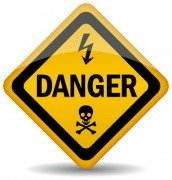
Although research into vinyl chloride monomer and other chemicals continues, advocacy groups have called on consumers to pay attention to what's in the products they buy!
And make sure to let manufacturers and retailers know if you want more choice in terms of the materials in the products available they are selling.
- Consumers have to vote with their wallets, according to advocates with consumers expressing their concern.
While the number of products made of PVC can seem overwhelming, there are alternatives available to those who want them as the number of natural and non-chlorinated plastic substitutes in the market grows.
- If it says no chlorine, that usually means it is not PVC!
Here's What to Check on Labels and Packaging
At present, labeling laws do not require manufacturers to list all toxins used in the creation of their product.
However, there are easy ways to recognize a PVC-based toy or product:
- Look for the three-arrow "recycling" symbol with the number 3 or the initials PVC, which indicates polyvinyl chloride. If neither symbol is present, then call the manufacturer's question/comment line (usually a toll-free 800 number) listed on the package or label.
Another clue to look for is the use of malleable or soft plastic.
- This can be found in toys, but also on clothing, bed linens and packaging. Read the labels and when in doubt, opt for a different product.
Avoid Plastics # 3 # 6 and # 7
- # 3 is PVC, in plastic drink containers and most plastic wrap. Avoid wrapping fatty foods e.g. cheese and meat that will absorb the chemicals.
- # 6 is polystyrene e.g. Styrofoam cups
- # 7 is polycarbonate that is hardened with BPA e.g. Nalgene water bottles, where this chemical leaches into the water.
Never put any warm food or drink in plastic and don’t use plastic cling wrap, especially on fatty foods which absorb the chemicals.
Safer Food Containers and Wraps
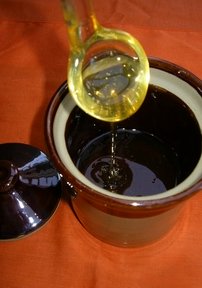
Plastics with a # 1, #2, #4 and #5 are better choices, but #1 plastic bottles should not be re-filled.
- Use glass bottles or stainless steel sports bottles to take out.
- Never warm anything in plastic in the microwave: use ceramic or glass
- Put a plate or paper towel on container in the microwave to keep the steam in.
- Use polyethylene plastic bags (shopping bags) for freezing and storing if you are going to use plastic, even though they are still a problem for the environment.
Safer Saran Wrap Cling Wrap and Cling Film:
If your plastic wrap says that it is made without chlorine, that is a good thing, because that means that it is not PVC, such as Saran Wrap Elite.
Safer Toys
You may want to pick toys from brands made with non-PVC-based plastic.
The BRANDS include:
Chicco, Evenflo, Gerber, International Playthings (including Primetime and Early Start), Lego, Sassy, Thomas and Tiny Love.
- According to Greenpeace's Toy Report Card, Discovery Toys and Manhattan Baby also provide an extensive selection of PVC-free toys, but some products do still contain it.
Another alternative is to purchase toys made from organic cotton or certified sustainable wood.
- Companies that specialize in these fibers include: Brio, Lamaze, Melissa & Doug, Thomas and Woodkits, to name a few.
Safer Alternatives to PVC
While avoiding all plastics is advised by some, it is not always practical. Thankfully, not all plastics are created equal.
- Look for other plastics that are considered less harmful, such as #1 PETE, #2 HDPE, #4 LDPE and #5 PP.
- While these plastics also leach chemicals, studies suggest that their level of toxicity is not as great as with PVC products.
Here are some suggestions for ways to avoid using plastics:
Safer Packaging Guidelines
- Choose refillable containers. Glass, for example, can be re-used for food storage.
- Choose packaging that's made from truly recyclable materials: paper, glass, metal cans. (Purchasing recycled paper products completes the recycling loop, too.)
- Buy in bulk, whenever possible. It's the least-packaged option.
- For wrapped foods, choose butcher paper, waxed paper or cellulose bags.
- Bring cloth bags when you go shopping, rather than using PVC-based plastic bags.
- Choose things made from #1 (PETE) or #2 (HDPE) whenever plastic cannot be avoided. These are the most commonly recycled plastics.
- Avoid plastics that aren't readily recyclable: #3 (PVC), #4 (LDPE), #5 (PP), #6 (PS), #7 (often polycarbonate).
- Avoid single-use, disposable packaging – shopping bags that are choking the environment are starting to be outlawed, e.g. in Nepal and San Francisco.
Some Everyday Tips
- Bring your own non-plastic container to salad bars, yogurt shops, etc. — any place you'd otherwise be served food in plastic containers.
- Avoid plastic cutlery and dinnerware. Use stainless steel utensils and look for recycled paper products.
- Microwave foods and drinks in oven-proof glass or ceramic dishes with lids. Never let plastic wrap touch food while in the microwave, as this is one way chemicals are suspected of leaching from plastic into food.
- When purchasing cling-wrapped foods from the supermarket or deli, slice off a thin layer where the food came into contact with the plastic and store the rest in a glass or ceramic container, or in non-PVC cling wrap.
What Else Can You Do?
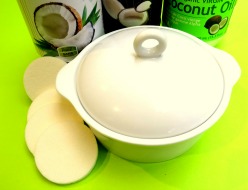
Are these polluting trends reversible? Absolutely. The answer lies with large corporations, obviously, to stop making these products.
But there are many things consumers can change, too. Here are some simple suggestions for avoiding chemicals:
CLEAN WITHOUT CHEMICALS:
If you do one thing, you should swap conventional cleaning products for more natural ones: use vinegar and baking soda instead.
- General Cleaner: Mix baking soda with a small amount of water.
- Lemon juice is a mild bleach and fabric whitener and degreaser and disinfectant.
- White vinegar dissolves grease, deodorizes and acts as a mild disinfectant. To clean windows, tile or mirror, use 1:3 solution of white vinegar and hot water.
- Spray on to glass or tile and remove with paper towels or newspapers.
- Vinegar is a good way to keep the toilet clean without harming the environment: concentrated antibacterial agents, on the other hand, kill ALL bacteria, including the ones needed to break down excrement in the sewer system.
Go Organic
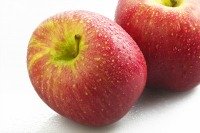
Start buying organic produce of "the Dirty Dozen” that tested the highest in pesticide residue by the US Dept. of Agriculture:
1) apples, 2) bell peppers 3) celery 4) cherries 5) grapes 6) nectarines 7) peaches 8) potatoes 9) raspberries, 9) spinach 10) strawberries...
Fruits and Veggies Ranked for Pesticide Load
Go Pesticide-Free
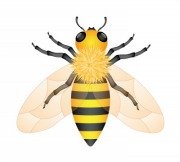
Weeds are not the enemy; chemicals are. So if your dandelions are bothersome, pull the offenders from the roots.
So you could make dandelion wine or throw them into your salads like the French do! They are a good source of minerals and fiber.
Many municipalities have legislated against pesticides to date. Will yours be next? Some are planting wild flowers and attracting tourists instead of using herbicides.
Maybe it's time to come to terms with the future now. Even our family physicians are urging us to do so.
- You can make BUGS STAY AWAY from your garden by spraying a combination of liquid soap and garlic on your flowers and plants or buying environmentally friendly products from organic lawn companies.
Use Less Plastics and Chemicals at Home
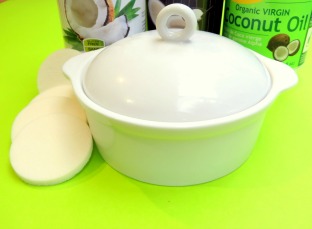
To reduce plastics and chemicals at home and work: buy recyclable glass and paper containers as much as possible.
- Avoid cooking microwave meals wrapped in clear plastic, even though the food industry has assured the FDA that microwave containers are now safe.
They say that as long as the plastic wrap doesn't touch the food, it won't contaminate it. Why take the risk? Place food in pottery or glass casserole dishes instead.
- Buy meats and cheese from a local butcher and ask that they be wrapped in paper.
- Drink from glasses, not plastic ones.
- Forget styrofoam cups and take-away meal containers. Away from home, take a stainless steel or ceramic mug to the coffee bar and wrap home-made sandwiches in old-fashioned wax or parchment paper.
Although you can scrub and peel your vegetables and fruits, there is no guarantee they will be totally free of pesticides.
Consider buying organic carrots, melons, berries, potatoes, onions, cabbage and other produce at grocery and health-food stores that carry them.
The non-organic varieties of these vegetables and fruits usually contain pesticide residues, according to the U.S. Food and Drug Administration Pesticide Program, Pesticide Residue Monitoring Survey.
- When demand for organics increases so does the demand for chemical-free farming. The prices are sure to go down, too, if we all start buying more organic products!
Walk, bike, blade, or take public transit. New Yorkers are healthier than other Americans possibly because they walk more. Walk to work or to go shopping. Bad air quality has been linked to heart disease, and during the warm months it causing more severe respiratory problems among the elderly and those with lung diseases.
The List Goes On....
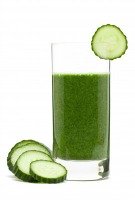
Why choose natural and organic?
Fire retardants are everywhere in clothes and furniture.
You name it, the list is growing! Here's another one:
Emulsifiers added to salad dressings and lots of foods so they don't separate...these are being found harmful to the gut:
- A study of mice has found that food additives commonly called emulsifiers — used to improve texture and extend shelf life — may play a role in the increasing incidences of obesity and chronic inflammatory bowel disease, according the the National Institutes of Health.
- Scientific review of the effects of BPA's
Best Protection For Your Family and Your Health

Best healthy living and child health?
While attention is usually on allergies -- food allergies more than chemicals for kids, scientists find it hard to narrow down the exact role of toxins in causing an allergy and the increased level allergies, mainly because we are all exposed.
- Here's how to ensure the best protection against chemicals and toxic reactions including to car exhaust and pesticides:
Supplements that Protect & Detox:
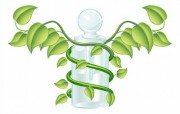
You may ASK US for a recommendation for:
- Best supplements for immune system strength
- Child safe supplements for detoxing and protection
- Safe supplements for baby allergies, toddler allergies and help with childhood cancer
- New child allergy treatment for peanut butter allergy
Recent Articles
-
Natural Blood Pressure Supplement Backed by Science
Apr 13, 24 04:10 PM
Try a natural blood pressure supplement for lowering blood pressure without life long medications. -
Scientists find a Natural Treatment for Parkinsons Disease
Apr 04, 22 10:18 PM
A new treatment for Parkinsons disease? Parkinson's disease is a neuro-degenerative disorder for which no neuro-restorative therapeutic treatment is currently available. The medications typically used… -
Amazon’s Best Beauty Products?
Mar 25, 22 12:00 AM
Finding which beauty product is best for your health has just become easier. Did you know that in 2022 Amazon created the Amazon AWARE line of beauty products that are EWG VERIFIED? This stamp of appr…


